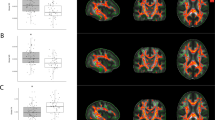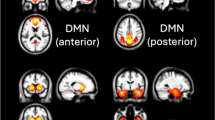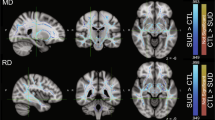Abstract
Contemporary neurocognitive models of drug addiction have associated this condition with changes in interoception —namely, the sensing and processing of body signals that fulfill homeostatic functions relevant for the onset and maintenance of addictive behavior. However, most previous evidence is inconsistent, behaviorally unspecific, and virtually null in terms of direct electrophysiological and multimodal markers. To circumvent these limitations, we conducted the first assessment of the relation between cardiac interoception and smoked cocaine dependence (SCD) in a sample of (a) 25 participants who fulfilled criteria for dependence on such a drug, (b) 22 participants addicted to insufflated clorhidrate cocaine (only for behavioral assessment), and (c) 25 healthy controls matched by age, gender, education, and socioeconomic status. We use a validated heartbeat-detection (HBD) task and measured modulations of the heart-evoked potential (HEP) during interoceptive accuracy and interoceptive learning conditions. We complemented this behavioral and electrophysiological data with offline structural (MRI) and functional connectivity (fMRI) analysis of the main interoceptive hubs. HBD and HEP results convergently showed that SCD subjects presented ongoing psychophysiological measures of enhanced interoceptive accuracy. This pattern was associated with a structural and functional tuning of interoceptive networks (reduced volume and specialized network segregation). Taken together, our findings provide the first evidence of an association between cardiac interoception and smoked cocaine, partially supporting models that propose hyper-interoception as a key aspect of addiction. More generally, our study shows that multimodal assessments of interoception could substantially inform the clinical and neurocognitive characterization of psychophysiological and neurocognitive adaptations triggered by addiction.
Similar content being viewed by others
Log in or create a free account to read this content
Gain free access to this article, as well as selected content from this journal and more on nature.com
or
References
Craig AD. Interoception: the sense of the physiological condition of the body. Curr Opin Neurobiol. 2003;13:500–5. https://doi.org/10.1016/S0959-4388(03)00090-4
Koob GF, Le Moal M. Drug addiction, dysregulation of reward, and allostasis. Neuropsychopharmacology. 2001;24:97–129. https://doi.org/10.1016/S0893-133X(00)00195-0
Ding X, Lee S-W. Changes of functional and effective connectivity in smoking replenishment on deprived heavy smokers: a resting-state fMRI study. PLoS ONE. 2013;8:e59331 https://doi.org/10.1371/journal.pone.0059331
Ma L, Steinberg JL, Moeller FG, Johns SE, Narayana PA. Effect of cocaine dependence on brain connections: clinical implications. Expert Rev Neurother. 2015;15:1307–19. https://doi.org/10.1586/14737175.2015.1103183
Naqvi NH, Rudrauf D, Damasio H, Bechara A. Damage to the insula disrupts addition to cigarette smoking. Science. 2007;315:531–5. https://doi.org/10.1126/science.1135926.Damage
Sutherland MT, Carroll AJ, Salmeron BJ, Ross TJ, Stein EA Insula’s functional connectivity with ventromedial prefrontal cortex mediates the impact of trait alexithymia on state tobacco craving. Psychopharmacology 2013;228: https://doi.org/10.1007/s00213-013-3018-8
Koob GF. Negative reinforcement in drug addiction: the darkness within. Curr Opin Neurobiol. 2013;23:559–63. https://doi.org/10.1016/j.conb.2013.03.011
Volkow ND, Morales M. The brain on drugs: from reward to addiction. Cell. 2015;162:712–25. https://doi.org/10.1016/j.cell.2015.07.046
Kiyatkin EA, Brown PLIv. cocaine induces rapid, transient excitation of striatal neurons via its action on peripheral neural elements: single-cell, iontophoretic study in awake and anesthetized rats. Neuroscience. 2007;148:978–95. https://doi.org/10.1016/j.neuroscience.2007.07.013
Wise RA, Wang B, You Z-B. Cocaine serves as a peripheral interoceptive conditioned stimulus for central glutamate and dopamine release. PLoS ONE. 2008;3:e2846 https://doi.org/10.1371/journal.pone.0002846
Wang B, You Z-B, Oleson EB, Cheer JF, Myal S, Wise RA. Conditioned contribution of peripheral cocaine actions to cocaine reward and cocaine-seeking. Neuropsychopharmacology. 2013;38:1763 https://doi.org/10.1038/npp.2013.75
Cheng Y, Lin CP, Liu HL, Hsu YY, Lim KE, Hung D, et al. Expertise modulates the perception of pain in others. Curr Biol. 2007;17:1708–13. https://doi.org/10.1016/j.cub.2007.09.020
Goldstein RZ, Craig AD, Bechara A, Garavan H, Childress AR, Paulus MP, et al. The neurocircuitry of impaired insight in drug addiction. Trends Cogn Sci. 2009;13:372–80. https://doi.org/10.1016/j.tics.2009.06.004
Simmonds D, Luna B Protracted development of brain systems underlying working memory in adolescence: a longitudinal study. NeuroImage. https://doi.org/10.1016/j.neuroimage.2017.01.016 (2015).
Taubert M, Draganski B, Anwander A, Müller K, Horstmann A, Villringer A, et al. Dynamic properties of human brain structure: learning-related changes in cortical areas and associated fiber connections. J Neurosci. 2010;30:11670 https://doi.org/10.1523/JNEUROSCI.2567-10.2010
Elmer S, Hänggi J, Jäncke L. Processing demands upon cognitive, linguistic, and articulatory functions promote grey matter plasticity in the adult multilingual brain: Insights from simultaneous interpreters. Cortex. 2014;54:179–89. https://doi.org/10.1016/j.cortex.2014.02.014
Zatorre RJ, Fields RD, Johansen-Berg H. Plasticity in gray and white: neuroimaging changes in brain structure during learning. Nat Neurosci. 2012;15:528 https://doi.org/10.1038/nn.3045
Ma L, Qiao Q, Tsai J-W, Yang G, Li W, Gan W-B. Experience-dependent plasticity of dendritic spines of layer 2/3 pyramidal neurons in the mouse cortex. Dev Neurobiol. 2016;76:277–86. https://doi.org/10.1002/dneu.22313
Magalhães EJ, Nascentes CC, Pereira LSA, Guedes MLO, Lordeiro RA, Auler LMLA, et al. Evaluation of the composition of street cocaine seized in two regions of Brazil. Sci Justice. 2013;53:425–32. https://doi.org/10.1016/j.scijus.2013.05.003
Kozel NJ. Reports of coca paste smoking: field investigations in South Florida and New York. Rockville: National Institute on Drug Abuse, Division of Epidemiology and Statistical Analysis; 1985.
Prieto JP, Galvalisi M, López-Hill X, Meikle MN, Abin-Carriquiry JA, Scorza C. Caffeine enhances and accelerates the expression of sensitization induced by coca paste indicating its relevance as a main adulterant. Am J Addict. 2015;24:475–81. https://doi.org/10.1111/ajad.12245
Galvalisi M, Prieto JP, Martínez M, Abin-Carriquiry JA, Scorza C. Caffeine induces a stimulant effect and increases dopamine release in the nucleus accumbens shell through the pulmonary inhalation route of administration in rats. Neurotox Res. 2017;31:90–8. https://doi.org/10.1007/s12640-016-9667-8
ElSohly MA, Brenneisen R, Jones AB. Coca paste: chemical analysis and smoking experiments. J Forensic Sci. 1991;36:93–103.
Navarro R, Yupanqui M, Geng J, Valdivia G, Girón M, Rojas M, et al. Development of a program of behavior modification directed to the rehabilitation of drug-dependent patients: treatment and follow-up of 223 cases. Int J Addict. 1992;27:391–408. https://doi.org/10.3109/10826089209068749
Kiluk BD, Babuscio TA, Nich C, Carroll KM. Smokers versus snorters: do treatment outcomes differ according to route of cocaine administration? Exp Clin Psychopharmacol. 2013;21:490–8. https://doi.org/10.1037/a0034173
Samaha AN, Robinson TE. Why does the rapid delivery of drugs to the brain promote addiction? Trends Pharmacol Sci. 2005;26:82–7. https://doi.org/10.1016/j.tips.2004.12.007
Davis WM. Psychopharmacologic violence associated with cocaine abuse: kindling of a limbic dyscontrol syndrome? Progress Neuropsychopharmacol Biol Psychiatry. 1996;20:1273–300. https://doi.org/10.1016/S0278-5846(96)00126-1
Khalsa SS, Adolphs R, Cameron OG, Critchley HD, Davenport PW, Feinstein JS, et al. Interoception and Mental Health: A Roadmap. Biological psychiatry. Cogn Neurosci neuroimaging. 2018;3:501–13. https://doi.org/10.1016/j.bpsc.2017.12.004
McHugh MJ, Demers CH, Braud J, Briggs R, Adinoff B, Stein EA. Striatal-insula circuits in cocaine addiction: implications for impulsivity and relapse risk. Am J Drug Alcohol Abus. 2013;39:424–32. https://doi.org/10.3109/00952990.2013.847446
Sönmez MB, Kahyacı Kılıç E, Ateş Çöl I, Görgülü Y, Köse Çınar R. Decreased interoceptive awareness in patients with substance use disorders. J Subst Use. 2017;22:60–5. https://doi.org/10.3109/14659891.2016.1143048
Ateş Çöl I, Sönmez MB, Vardar ME. Evaluation of Interoceptive awareness in alcohol-addicted patients. Noro Psikiyatr arsivi. 2016;53:17–22. https://doi.org/10.5152/npa.2015.9898
Schmidt AF, Eulenbruch T, Langer C, Banger M. Interoceptive awareness, tension reduction expectancies and self-reported drinking behavior. Alcohol Alcohol. 2013;48:472–7. https://doi.org/10.1093/alcalc/agt024
Yoris A, Abrevaya S, Esteves S, Salamone P, Lori N, Martorell M, et al. Multilevel convergence of interoceptive impairments in hypertension: new evidence of disrupted body–brain interactions. Hum Brain Mapp. 2018;39:1563–81. https://doi.org/10.1002/hbm.23933
García-Cordero I, Sedeño L, de la Fuente L, Slachevsky A, Forno G, Klein F, et al. Feeling, learning from and being aware of inner states: interoceptive dimensions in neurodegeneration and stroke. Philos Trans R Soc Lond B Biol Sci. 1708;2016:371 https://doi.org/10.1098/rstb.2016.0006. 20160006
Adinoff B, Gu H, Merrick C, McHugh M, Jeon-Slaughter H, Lu H, et al. Basal hippocampal activity and its functional connectivity predicts cocaine relapse. Biol Psychiatry. 2015;78:1–9. https://doi.org/10.1016/j.biopsych.2014.12.027
Group WHOAW. The Alcohol, Smoking and Substance Involvement Screening Test (ASSIST): development, reliability and feasibility. Addiction. 2002;97:1183–94. https://doi.org/10.1046/j.1360-0443.2002.00185.x
Tiffany ST, Singleton E, Haertzen CA, Henningfield JE. The development of a cocaine craving questionnaire. Drug Alcohol Depend. 1993;34:19–28. https://doi.org/10.1016/0376-8716(93)90042-O
Liberona Y, Castillo O, Engler V, Villarroel L, Rozowski J. Nutritional profile of schoolchildren from different socio-economic levels in Santiago, Chile. Public Health Nutr. 2011;14:142–9. https://doi.org/10.1017/S1368980010001540
Pena R, Wall S, Persson LA. The effect of poverty, social inequity, and maternal education on infant mortality in Nicaragua, 1988-1993. Am J Public Health. 2000;90:64–9.
Canales-Johnson A, Silva C, Huepe D, Garcia M, Silva W, Ciraolo C, et al. Auditory feedback differentially modulates behavioral and neural markers of objective and subjective performance when tapping to your heartbeat. Cereb Cortex. https://doi.org/10.1093/biostatistics/manuscript-acf-v5; 2015.
García-Cordero I, Esteves S, Mikulan EP, Hesse E, Baglivo FH, Silva W, et al. Attention, in and out: scalp-level and intracranial EEG correlates of interoception and exteroception. Front Neurosci. https://doi.org/10.3389/fnins.2017.00411; 2017.
Couto B, Salles A, Sedeno L, Peradejordi M, Barttfeld P, Canales-Johnson A, et al. The man who feels two hearts: the different pathways of interoception. Soc Cogn Affect Neurosci. 2014;9:1253–60. https://doi.org/10.1093/scan/nst108
Werner G, Mountcastle VB. The variability of central neural activity in a sensory system, and its implications for the central reflection of sensory events. J Neurophysiol. 1963;26:958–77. https://doi.org/10.1152/jn.1963.26.6.958
Hoffmeyer-Zlotnik JHP, Wolf C. ESOMAR European Society for Opinion and Marketing Research. The ESOMAR Standard Demographic Classification. Boston, MA: Springer US; 2003. p. 97–121.
Fan L, Li H, Zhuo J, Zhang Y, Wang J, Chen L, et al. The human brainnetome atlas: a new brain atlas based on connectional architecture. Cereb Cortex. 2016;26:3508–26. https://doi.org/10.1093/cercor/bhw157
Couto B, Adolfi F, Sedeño L, Salles A, Canales-Johnson A, Alvarez-Abut P, et al. Disentangling interoception: insights from focal strokes affecting the perception of external and internal milieus. Front Psychol. 2015;6. https://doi.org/10.3389/fpsyg.2015.00503
Couto B, Salles A, Sedeño L, Peradejordi M, Barttfeld P, Canales-Johnson A, et al. The man who feels two hearts: the different pathways of interoception. Soc Cogn Affect Neurosci. 2013;54:1–8. https://doi.org/10.1093/scan/nst108
Zimmerman DW. Increasing thE Power of Nonparametric Tests by Detecting and Downweighting Outliers. J Exp Educ. 1995;64:71–8.
Friston K, Ashburner J, Kiebel S, Nichols T, Penny W. Statistical Parametric Mapping (SPM), Academic Press; 2007. https://doi.org/10.1016/B978-012372560-8/50000-0
Pollatos O, Herbert BM, Mai S, Kammer T. Changes in interoceptive processes following brain stimulation. Philos Trans R Soc Lond. 2016;371. https://doi.org/10.1098/rstb.2016.0016
Scorza C, Piccini C, Martínez Busi M, Abin Carriquiry JA, Zunino P. Alterations in the gut microbiota of rats chronically exposed to volatilized cocaine and its active adulterants caffeine and phenacetin. Neurotox Res. https://doi.org/10.1007/s12640-018-9936-9; 2018.
Kiraly DD, Walker DM, Calipari ES, Labonte B, Issler O, Pena CJ, et al. Alterations of the host microbiome affect behavioral responses to cocaine. Sci Rep. 2016;6:35455 https://doi.org/10.1038/srep35455
Cisler JM, Elton A, Kennedy AP, Young J, Smitherman S, James GA, et al. Altered functional connectivity of the insular cortex across prefrontal networks in cocaine addiction. Psychiatry Res. 2013;213:39–46. https://doi.org/10.1016/j.pscychresns.2013.02.007
Garfinkel SN, Eccles JA, Critchley HD. The heart, the brain, and the regulation of emotion. JAMA Psychiatry. 2015;72:1071 https://doi.org/10.1001/jamapsychiatry.2015.1493
Jeon HA, Friederici AD. What does “Being an Expert” mean to the brain? Functional specificity and connectivity in expertise. Cereb Cortex. 2017;27:5603–15. https://doi.org/10.1093/cercor/bhw329
Pfefferbaum A, Rohl T, Pohl KM, Lane B, Chu W, Kwon D, et al. Adolescent development of cortical and white matter structure in the NCANDA sample: role of sex, ethnicity, puberty, and alcohol drinking. Cereb Cortex. 2015;i:1–21. https://doi.org/10.1093/cercor/bhv205
Franklin TR, Acton PD, Maldjian JA, Gray JD, Croft JR, Dackis CA, et al. Decreased gray matter concentration in the insular, orbitofrontal, cingulate, and temporal cortices of cocaine patients. Biol Psychiatry. 2002;51:134–42. https://doi.org/10.1016/S0006-3223(01)01269-0
Craig aD. A new view of pain as a homeostatic emotion. Trends Neurosci. 2003;26:303–7. https://doi.org/10.1016/S0166-2236(03)00123-1
Duan X, Liao W, Liang D, Qiu L, Gao Q, Liu C, et al. Large-scale brain networks in board game experts: insights from a domain-related task and task-free resting state. PLoS ONE. 2012;7:e32532 https://doi.org/10.1371/journal.pone.0032532
Stewart JL, May AC, Tapert SF, Paulus MP. Hyperactivation to pleasant interoceptive stimuli characterizes the transition to stimulant addiction. Drug Alcohol Depend. 2015;154:264–70. https://doi.org/10.1016/j.drugalcdep.2015.07.009
Migliorini R, Stewart JL, May AC, Tapert SF, Paulus MP. What do you feel? Adolescent drug and alcohol users show altered brain response to pleasant interoceptive stimuli. Drug Alcohol Depend. 2013;133:661–8. https://doi.org/10.1016/j.drugalcdep.2013.08.015
Murphy J, Brewer R, Catmur C, Bird G. Interoception and psychopathology: a developmental neuroscience perspective. Dev Cogn Neurosci. 2017;23:45–56. https://doi.org/10.1016/j.dcn.2016.12.006
Kelly AMC, Garavan H. Human functional neuroimaging of brain changes associated with practice. Cereb Cortex. 2005;15:1089–102. https://doi.org/10.1093/cercor/bhi005
Sedeno L, Piguet O, Abrevaya S, Desmaras H, Garcia-Cordero I, Baez S, et al. Tackling variability: a multicenter study to provide a gold-standard network approach for frontotemporal dementia. Hum Brain Mapp. 2017;38:3804–22. https://doi.org/10.1002/hbm.23627
Moguilner S, García AM, Mikulan E, Hesse E, García-Cordero I, Melloni M, et al. Weighted Symbolic Dependence Metric (wSDM) for fMRI resting-state connectivity: a multicentric validation for frontotemporal dementia. Sci Rep. 2018;8:11181 https://doi.org/10.1038/s41598-018-29538-9
Abrevaya S, Sedeno L, Fitipaldi S, Pineda D, Lopera F, Buritica O, et al. The road less traveled: alternative pathways for action-verb processing in Parkinson's disease. J Alzheimers Dis. 2017;55:1429-35. https://doi.org/10.3233/JAD-160737
Mayer AR, Mannell MV, Ling J, Gasparovic C, Yeo RA. Functional connectivity in mild traumatic brain injury. Hum Brain Mapp. 2011;32:1825–35.
Wu T, Long X, Wang L, Hallett M, Zang Y, Li K, et al. Functional connectivity of cortical motor areas in the resting state in Parkinson's disease. Hum Brain Mapp. 2011;32:1443–57.
Wu X, Li R, Fleisher AS, Reiman EM, Guan X, Zhang Y, et al. Altered default mode network connectivity in Alzheimer's disease—a resting functional MRI and Bayesian network study. Hum Brain Mapp. 2011;32:1868–81.
Romo-Avilés N, Camarotti AC, Tarragona A, Touris C. Doing gender in a toxic world. Women and Freebase Cocaine in the City of Buenos Aires (Argentina). Subst Use Misuse. 2015;50:557–65. https://doi.org/10.3109/10826084.2014.991404
Grant BF, Dawson DA. Age of onset of drug use and its association with DSM-IV drug abuse and dependence: Results from the national longitudinal alcohol epidemiologic survey. J Subst Abus. 1998;10:163–73. https://doi.org/10.1016/S0899-3289(99)80131-X
Gray MA, Critchley HD. Interoceptive basis to craving. Neuron. 2007;54:183–6. https://doi.org/10.1016/j.neuron.2007.03.024
Luthi A, Luscher C. Pathological circuit function underlying addiction and anxiety disorders. Nat Neurosci. 2014;17:1635–43. https://doi.org/10.1038/nn.3849
Khalsa SS, Lapidus RC. Can interoception improve the pragmatic search for biomarkers in psychiatry? Front Psychiatry. 2016;7:1–19. https://doi.org/10.3389/fpsyt.2016.00121
Paulus MP, Stewart JL, Haase L. Treatment approaches for interoceptive dysfunctions in drug addiction. Front Psychiatry. 2013;4:137 https://doi.org/10.3389/fpsyt.2013.00137
Sinha R, Jastreboff AM. Stress as a common risk factor for obesity and addiction. Biol Psychiatry. 2013;73:827–35. https://doi.org/10.1016/j.biopsych.2013.01.032
Martinez D, Orlowska D, Narendran R, Slifstein M, Liu F, Kumar D, et al. Dopamine type 2/3 Receptor availability in the striatum and social status in human volunteers. Biol Psychiatry. 2010;67:275–8. https://doi.org/10.1016/j.biopsych.2009.07.037
Sinha R. The role of stress in addiction relapse. Curr Psychiatry Rep. 2007;9:388–95. https://doi.org/10.1007/s11920-007-0050-6
Seo D, Tsou Ka, Ansell EB, Potenza MN, Rajita S. Cumulative adversity sensitizes neural response to acute stress: association with health symptoms. Neuropsychopharmacology. 2014;39:670–80. https://doi.org/10.1038/npp.2013.250
Harrington M, Robinson J, Bolton SL, Sareen J, Bolton JM. A longitudinal study of risk factors for incident drug use in adults: Findings from a representative sample of the US population. Can J Psychiatry. 2011;56:686–95. https://doi.org/10.1177/070674371105601107
Schulz A, Vögele C. Interoception and stress. Front Psychol. 2015;6:993 https://doi.org/10.3389/fpsyg.2015.00993
Acknowledgements
The authors acknowledge the Federación de Organizaciones no Gubernamentales de la Argentina para la Prevención y el Tratamiento de Abuso de Drogas (FONGA) as well as the patients, clinicians, and operators of the therapeutic communities (Buen Sanmaritano, Reparo, Foundation Creer es crear, Creando la libertad, Palomar, Modelo Minnesota). Also, we acknowledge the incredibly generous and committed help of the people of the nonprofit organizations who connected us with the control participants (Center Juan Pablo II, Foundation Temas, Matanza secretary, Agustin at Barrio Miter).
Author information
Authors and Affiliations
Corresponding author
Additional information
Publisher’s note: Springer Nature remains neutral with regard to jurisdictional claims in published maps and institutional affiliations.
Supplementary information
Rights and permissions
About this article
Cite this article
de la Fuente, A., Sedeño, L., Vignaga, S.S. et al. Multimodal neurocognitive markers of interoceptive tuning in smoked cocaine. Neuropsychopharmacol. 44, 1425–1434 (2019). https://doi.org/10.1038/s41386-019-0370-3
Received:
Revised:
Accepted:
Published:
Issue date:
DOI: https://doi.org/10.1038/s41386-019-0370-3
This article is cited by
-
Altered processing of self-produced sensations in psychosis at cortical and spinal levels
Molecular Psychiatry (2025)
-
Interoception Within the Context of Impulsivity and Addiction
Current Addiction Reports (2023)
-
Multicentric evidence of emotional impairments in hypertensive heart disease
Scientific Reports (2020)
-
Molecular changes in the nucleus accumbens and prefrontal cortex associated with the locomotor sensitization induced by coca paste seized samples
Psychopharmacology (2020)



